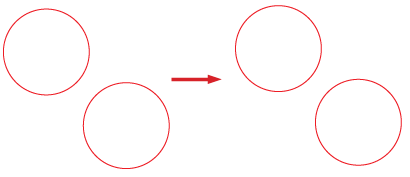Simple Multi Bosses
This ToolBox Cycles strategy enables you to perform the machining of several bosses starting from one face. The machining is performed in a number of equidistant Clear offset passes parallel to the selected bosses geometry. The cutting passes are generated for the whole geometry combined from the initial bosses.
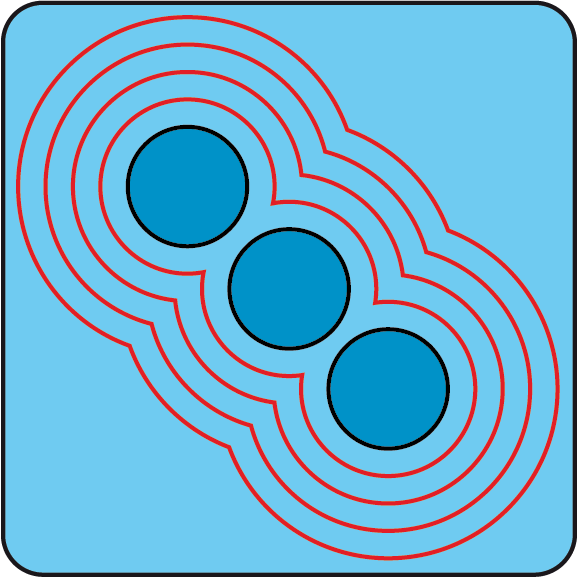
Geometry definition
The strategy provided by this sub-operation can be performed only on closed chains; accordingly, the geometry should contain at least one closed chain. The geometry containing only open chains is considered as unsuitable. The geometry containing at least one closed chain is considered as suitable. The mixed geometry containing a number of open and closed chains is considered as suitable, but all the open chains are ignored during the tool path calculation.
A subset of closed chain pairs is used for this sub-operation.
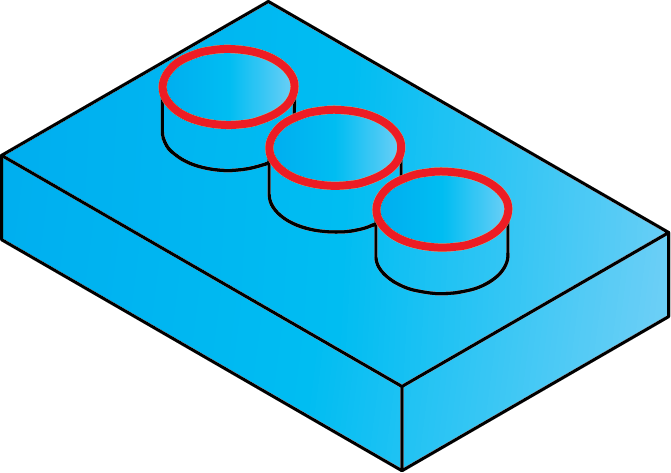
Intersections between the geometry chains are acceptable.
The direction of the geometry chains is not considered during the tool path calculation.
Technological parameters
Rough
SolidCAM enables you to perform the bosses machining in a number of roughing cutting passes distributed along the tool axis.
Step down
The distance between two successive cutting levels is defined by the Step down parameter. The Equal step down option enables you to define a number of evenly distributed cutting levels. SolidCAM automatically calculates the actual step down to keep an equal distance between all passes, while taking into account the specified Max. Step down value so that it is not exceeded.
Clear offset
The machining of the bosses geometry from a distance starts from the geometry defined with the Clear offset parameter and continues in a number of cutting passes. The distance between two successive cutting passes is defined by the Step over parameter.
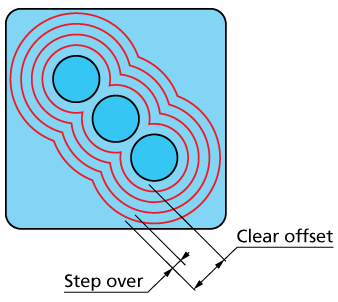
Direction
The Direction section enables you to define the tool path ordering and direction.
When the One way option is chosen, SolidCAM performs all the cutting passes along the geometry chains in a single direction that enables the tool to maintain the climb milling for all the cuts.
When the Zigzag option is chosen, SolidCAM changes the direction for all the even cuts. Therefore the machining is performed with the combination of climb and conventional milling.
Offsets
This section enables you to define Wall and Floor offsets for this sub-operation. The Wall offset is applied to the walls of the bosses; the specified offset is left unmachined during the current sub-operation. The Floor offset is applied to the floor (the model face, on which the bosses are located); the specified offset is left unmachined during the current sub-operation. When the Floor offset value is specified, SolidCAM performs the machining by the Z-levels defined with the Step down parameter. The machining is performed until the Floor offset level.
Finish
The Wall finish option enables you to perform a final finishing pass cleaning the walls. You can specify the Step down value in a separate field.
Compensation
If the Compensation check box is selected, the tool radius compensation options G4x of the CNC-controller are used in the GCode.
Tool path calculation
During the tool path calculation, SolidCAM generates for each geometry chain a number of offsets equidistant to the initial chain geometry. The offsets are generated starting from the Clear offset distance from the geometry. The distance between two successive offset passes is defined with the Step over parameter.
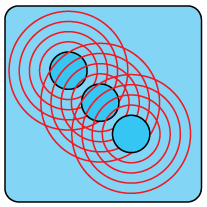
As the result, the same number of cutting passes is obtained for each geometry chain. At the next stage, SolidCAM takes all the first cutting passes of all the chains, trims them and unites into one cutting pass.
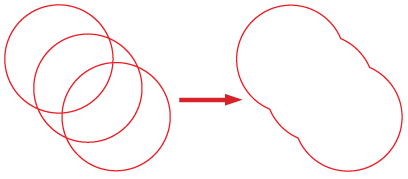
|
If the initial cutting passes have no intersection, the trimming cannot be performed. Therefore, the result of the unite operation will be the same as the input.
|
Similar uniting is performed for all the chains. The resulting cutting passes are shown below.
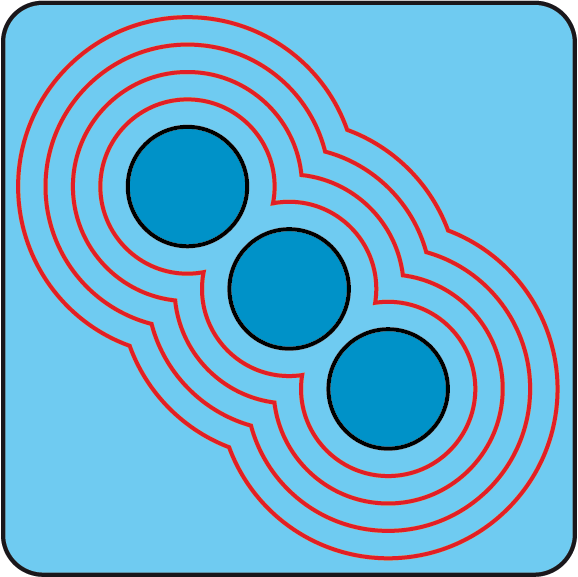
In some cases, the final tool path can contain a number of not trimmed/united cutting passes around separate bosses and trimmed/united cutting passes.
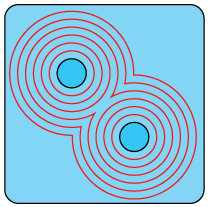
The resulting tool path is linked and machined in the climb direction.
